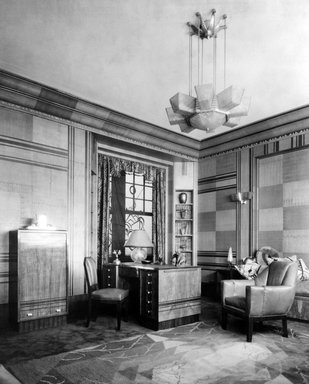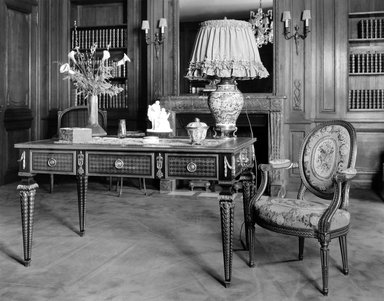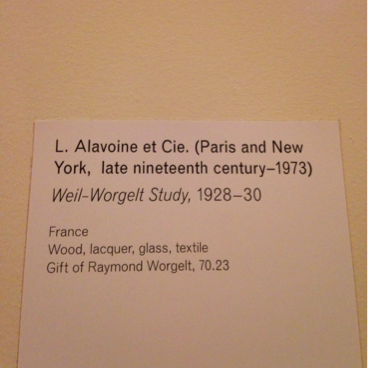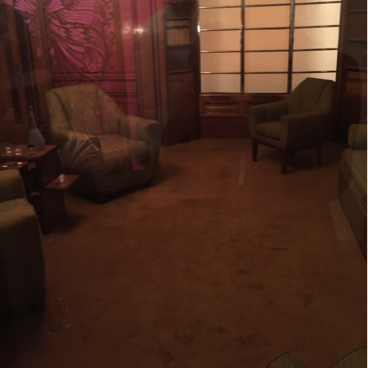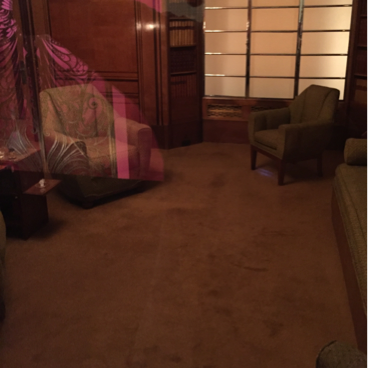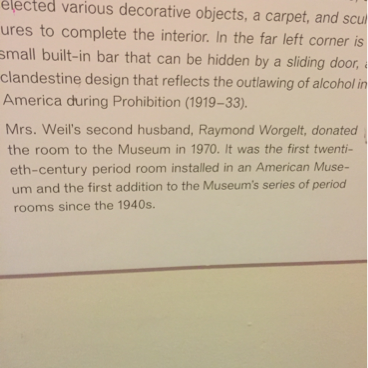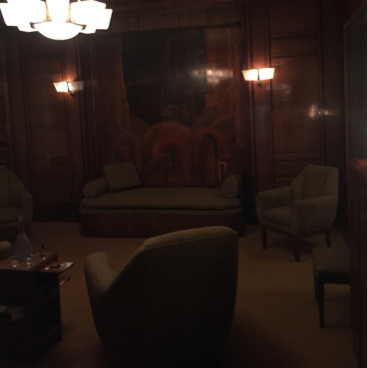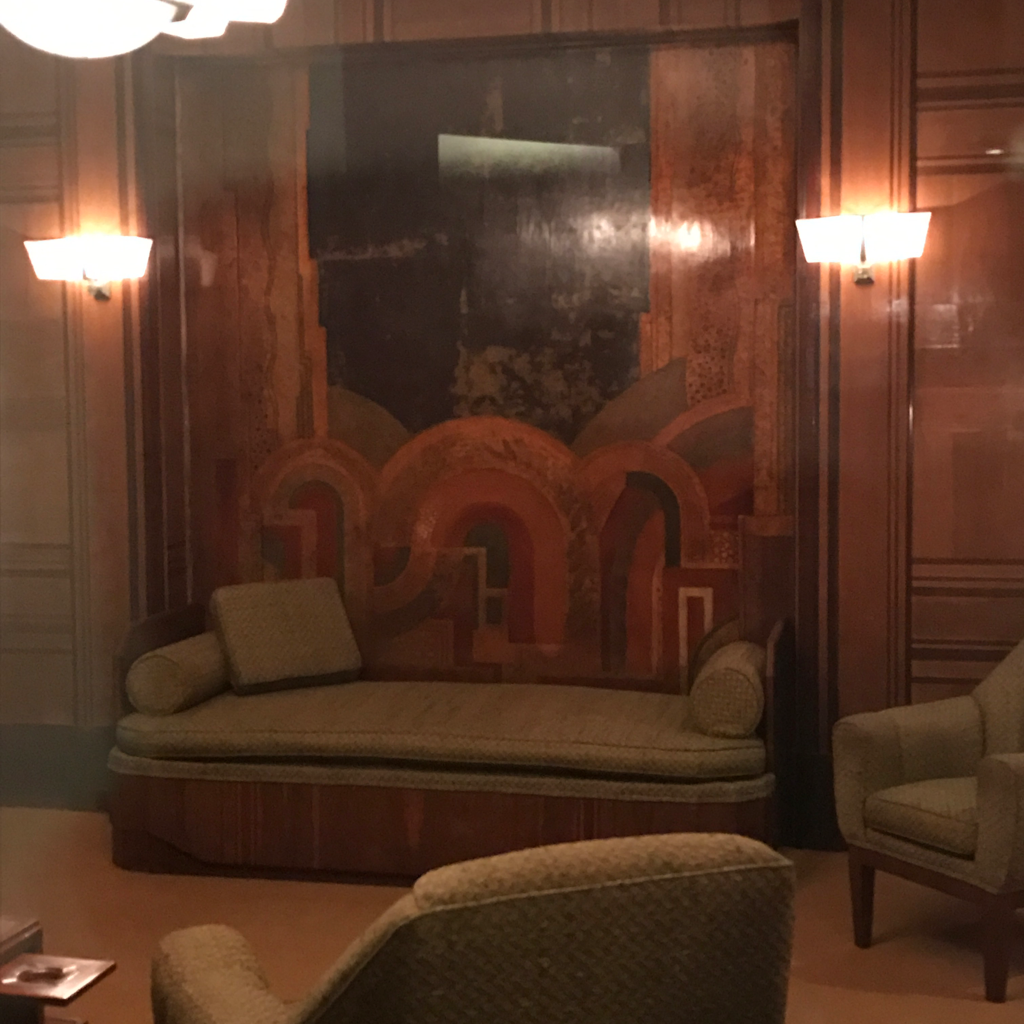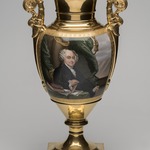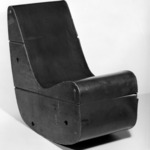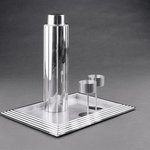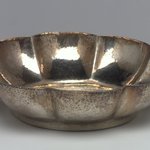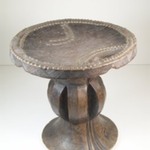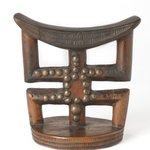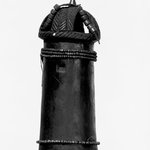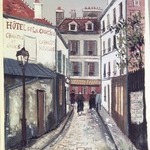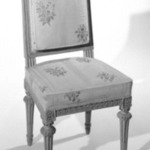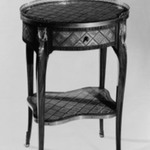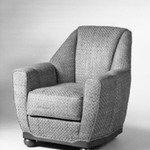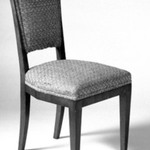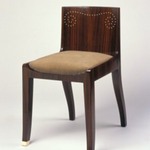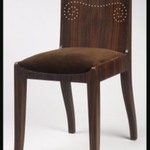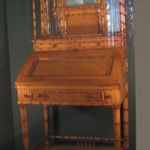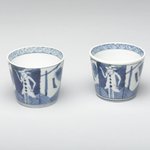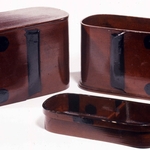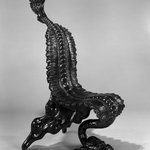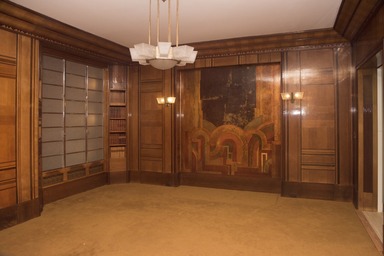
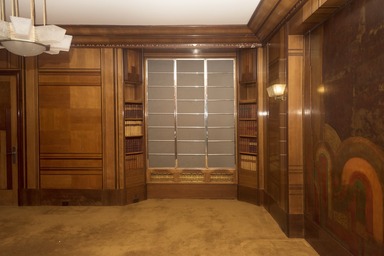
Alavoine of Paris and New York. Weil-Worgelt Study, ca. 1928–1930. Lacquer, glass, leather, veneered panels, 119 x 201 1/2 x 176 1/4 in. (302.3 x 511.8 x 447.7 cm). Brooklyn Museum, Gift of Raymond Worgelt, 70.23. Creative Commons-BY (Photo: , CONS.70.23_view01_PS11.jpg)
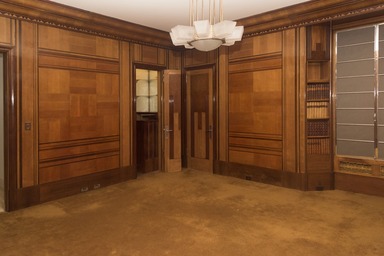
Alavoine of Paris and New York. Weil-Worgelt Study, ca. 1928–1930. Lacquer, glass, leather, veneered panels, 119 x 201 1/2 x 176 1/4 in. (302.3 x 511.8 x 447.7 cm). Brooklyn Museum, Gift of Raymond Worgelt, 70.23. Creative Commons-BY (Photo: , CONS.70.23_view02_PS11.jpg)
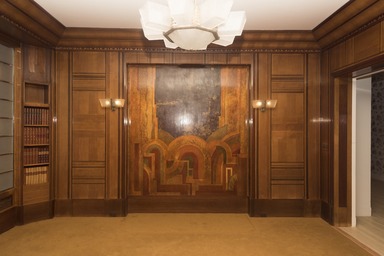
Alavoine of Paris and New York. Weil-Worgelt Study, ca. 1928–1930. Lacquer, glass, leather, veneered panels, 119 x 201 1/2 x 176 1/4 in. (302.3 x 511.8 x 447.7 cm). Brooklyn Museum, Gift of Raymond Worgelt, 70.23. Creative Commons-BY (Photo: , CONS.70.23_view03_PS11.jpg)
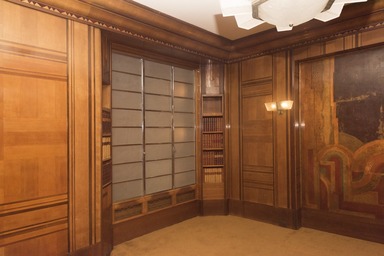
Alavoine of Paris and New York. Weil-Worgelt Study, ca. 1928–1930. Lacquer, glass, leather, veneered panels, 119 x 201 1/2 x 176 1/4 in. (302.3 x 511.8 x 447.7 cm). Brooklyn Museum, Gift of Raymond Worgelt, 70.23. Creative Commons-BY (Photo: , CONS.70.23_view04_PS11.jpg)
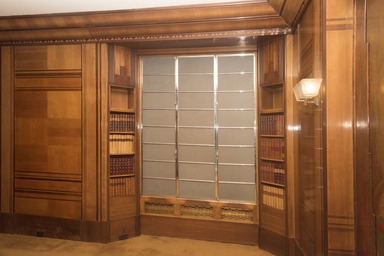
Alavoine of Paris and New York. Weil-Worgelt Study, ca. 1928–1930. Lacquer, glass, leather, veneered panels, 119 x 201 1/2 x 176 1/4 in. (302.3 x 511.8 x 447.7 cm). Brooklyn Museum, Gift of Raymond Worgelt, 70.23. Creative Commons-BY (Photo: , CONS.70.23_view05_PS11.jpg)
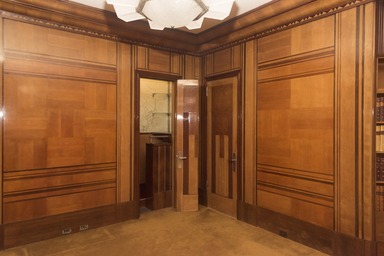
Alavoine of Paris and New York. Weil-Worgelt Study, ca. 1928–1930. Lacquer, glass, leather, veneered panels, 119 x 201 1/2 x 176 1/4 in. (302.3 x 511.8 x 447.7 cm). Brooklyn Museum, Gift of Raymond Worgelt, 70.23. Creative Commons-BY (Photo: , CONS.70.23_view06_PS11.jpg)
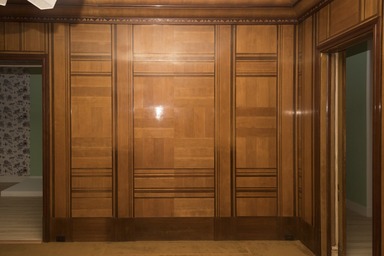
Alavoine of Paris and New York. Weil-Worgelt Study, ca. 1928–1930. Lacquer, glass, leather, veneered panels, 119 x 201 1/2 x 176 1/4 in. (302.3 x 511.8 x 447.7 cm). Brooklyn Museum, Gift of Raymond Worgelt, 70.23. Creative Commons-BY (Photo: , CONS.70.23_view07_PS11.jpg)
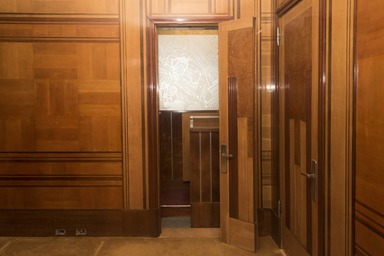
Alavoine of Paris and New York. Weil-Worgelt Study, ca. 1928–1930. Lacquer, glass, leather, veneered panels, 119 x 201 1/2 x 176 1/4 in. (302.3 x 511.8 x 447.7 cm). Brooklyn Museum, Gift of Raymond Worgelt, 70.23. Creative Commons-BY (Photo: , CONS.70.23_view08_PS11.jpg)
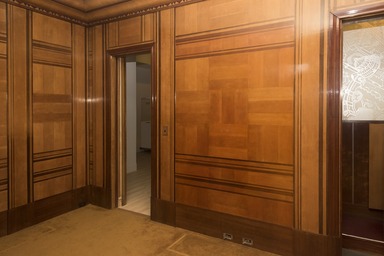
Alavoine of Paris and New York. Weil-Worgelt Study, ca. 1928–1930. Lacquer, glass, leather, veneered panels, 119 x 201 1/2 x 176 1/4 in. (302.3 x 511.8 x 447.7 cm). Brooklyn Museum, Gift of Raymond Worgelt, 70.23. Creative Commons-BY (Photo: , CONS.70.23_view09_PS11.jpg)

Alavoine of Paris and New York. Weil-Worgelt Study, ca. 1928–1930. Lacquer, glass, leather, veneered panels, 119 x 201 1/2 x 176 1/4 in. (302.3 x 511.8 x 447.7 cm). Brooklyn Museum, Gift of Raymond Worgelt, 70.23. Creative Commons-BY (Photo: , CONS.70.23_view10_PS11.jpg)
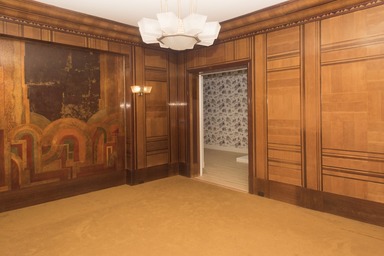
Alavoine of Paris and New York. Weil-Worgelt Study, ca. 1928–1930. Lacquer, glass, leather, veneered panels, 119 x 201 1/2 x 176 1/4 in. (302.3 x 511.8 x 447.7 cm). Brooklyn Museum, Gift of Raymond Worgelt, 70.23. Creative Commons-BY (Photo: , CONS.70.23_view11_PS11.jpg)
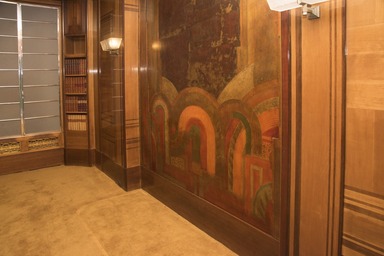
Alavoine of Paris and New York. Weil-Worgelt Study, ca. 1928–1930. Lacquer, glass, leather, veneered panels, 119 x 201 1/2 x 176 1/4 in. (302.3 x 511.8 x 447.7 cm). Brooklyn Museum, Gift of Raymond Worgelt, 70.23. Creative Commons-BY (Photo: , CONS.70.23_view12_PS11.jpg)

Alavoine of Paris and New York. Weil-Worgelt Study, ca. 1928–1930. Lacquer, glass, leather, veneered panels, 119 x 201 1/2 x 176 1/4 in. (302.3 x 511.8 x 447.7 cm). Brooklyn Museum, Gift of Raymond Worgelt, 70.23. Creative Commons-BY (Photo: , CONS.70.23_view13_PS11.jpg)
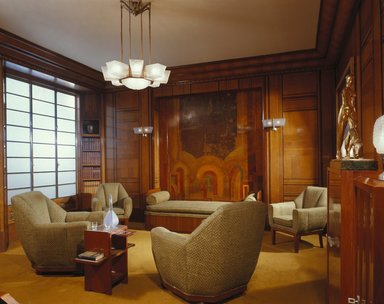
Alavoine of Paris and New York. Weil-Worgelt Study, ca. 1928–1930. Lacquer, glass, leather, veneered panels, 119 x 201 1/2 x 176 1/4 in. (302.3 x 511.8 x 447.7 cm). Brooklyn Museum, Gift of Raymond Worgelt, 70.23. Creative Commons-BY (Photo: Brooklyn Museum, 70.23_SL1.jpg)
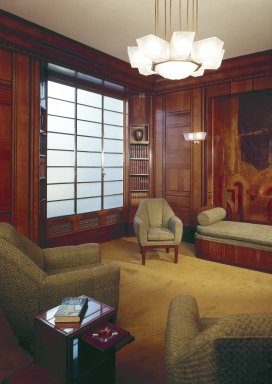
Alavoine of Paris and New York. Weil-Worgelt Study, ca. 1928–1930. Lacquer, glass, leather, veneered panels, 119 x 201 1/2 x 176 1/4 in. (302.3 x 511.8 x 447.7 cm). Brooklyn Museum, Gift of Raymond Worgelt, 70.23. Creative Commons-BY (Photo: Brooklyn Museum, 70.23_transp02434c001_yr1971_installation_IMLS_SL2.jpg)
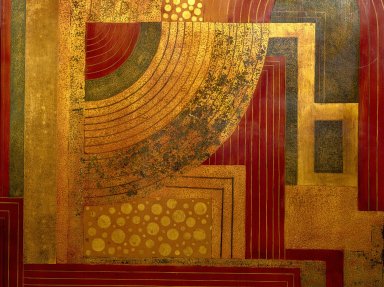
Alavoine of Paris and New York. Weil-Worgelt Study, ca. 1928–1930. Lacquer, glass, leather, veneered panels, 119 x 201 1/2 x 176 1/4 in. (302.3 x 511.8 x 447.7 cm). Brooklyn Museum, Gift of Raymond Worgelt, 70.23. Creative Commons-BY (Photo: Brooklyn Museum, 70.23_transp02436c001_yr1971_installation_wall_detail_IMLS_SL2.jpg)
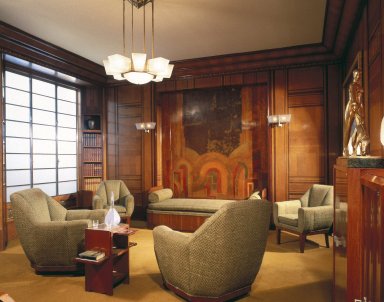
Alavoine of Paris and New York. Weil-Worgelt Study, ca. 1928–1930. Lacquer, glass, leather, veneered panels, 119 x 201 1/2 x 176 1/4 in. (302.3 x 511.8 x 447.7 cm). Brooklyn Museum, Gift of Raymond Worgelt, 70.23. Creative Commons-BY (Photo: Brooklyn Museum, 70.23_transp70.23c002_installation_IMLS_SL2.jpg)
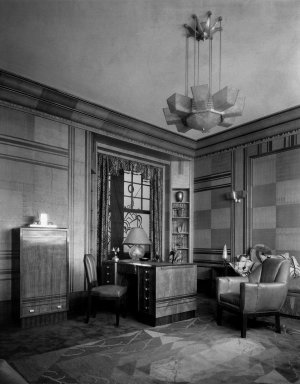
Alavoine of Paris and New York. Weil-Worgelt Study, ca. 1928–1930. Lacquer, glass, leather, veneered panels, 119 x 201 1/2 x 176 1/4 in. (302.3 x 511.8 x 447.7 cm). Brooklyn Museum, Gift of Raymond Worgelt, 70.23. Creative Commons-BY (Photo: Brooklyn Museum, 70.23_yr1928_in_situ1_bw_IMLS.jpg)
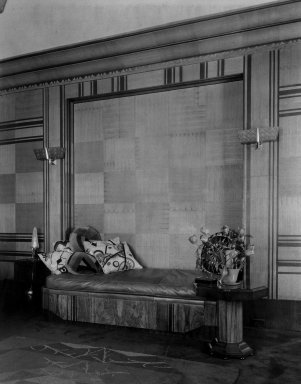
Alavoine of Paris and New York. Weil-Worgelt Study, ca. 1928–1930. Lacquer, glass, leather, veneered panels, 119 x 201 1/2 x 176 1/4 in. (302.3 x 511.8 x 447.7 cm). Brooklyn Museum, Gift of Raymond Worgelt, 70.23. Creative Commons-BY (Photo: Brooklyn Museum, 70.23_yr1928_in_situ2_bw_IMLS.jpg)
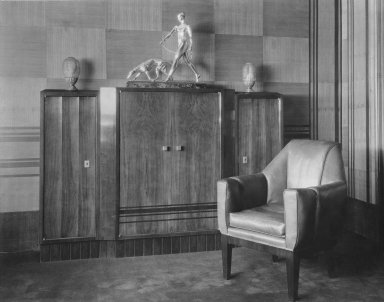
Alavoine of Paris and New York. Weil-Worgelt Study, ca. 1928–1930. Lacquer, glass, leather, veneered panels, 119 x 201 1/2 x 176 1/4 in. (302.3 x 511.8 x 447.7 cm). Brooklyn Museum, Gift of Raymond Worgelt, 70.23. Creative Commons-BY (Photo: Brooklyn Museum, 70.23_yr1928_in_situ3_bw_IMLS.jpg)
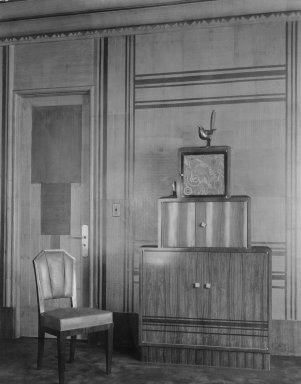
Alavoine of Paris and New York. Weil-Worgelt Study, ca. 1928–1930. Lacquer, glass, leather, veneered panels, 119 x 201 1/2 x 176 1/4 in. (302.3 x 511.8 x 447.7 cm). Brooklyn Museum, Gift of Raymond Worgelt, 70.23. Creative Commons-BY (Photo: Brooklyn Museum, 70.23_yr1928_in_situ4_bw_IMLS.jpg)

Alavoine of Paris and New York. Weil-Worgelt Study, ca. 1928–1930. Lacquer, glass, leather, veneered panels, 119 x 201 1/2 x 176 1/4 in. (302.3 x 511.8 x 447.7 cm). Brooklyn Museum, Gift of Raymond Worgelt, 70.23. Creative Commons-BY (Photo: Brooklyn Museum, 70.23_yr1970_in_situ01_bw_IMLS.jpg)
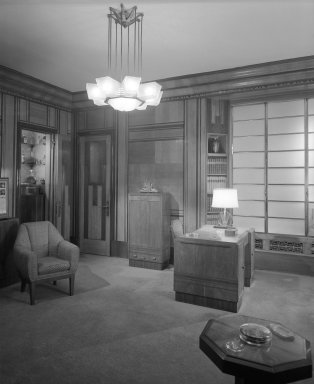
Alavoine of Paris and New York. Weil-Worgelt Study, ca. 1928–1930. Lacquer, glass, leather, veneered panels, 119 x 201 1/2 x 176 1/4 in. (302.3 x 511.8 x 447.7 cm). Brooklyn Museum, Gift of Raymond Worgelt, 70.23. Creative Commons-BY (Photo: Brooklyn Museum, 70.23_yr1970_in_situ02_bw_IMLS.jpg)
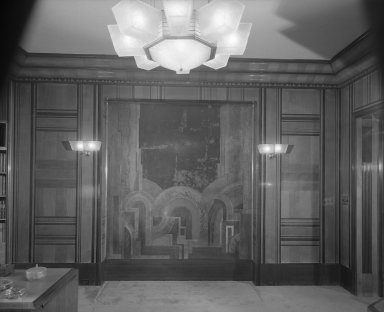
Alavoine of Paris and New York. Weil-Worgelt Study, ca. 1928–1930. Lacquer, glass, leather, veneered panels, 119 x 201 1/2 x 176 1/4 in. (302.3 x 511.8 x 447.7 cm). Brooklyn Museum, Gift of Raymond Worgelt, 70.23. Creative Commons-BY (Photo: Brooklyn Museum, 70.23_yr1970_in_situ03_bw_IMLS.jpg)
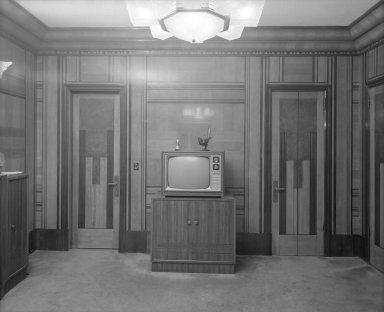
Alavoine of Paris and New York. Weil-Worgelt Study, ca. 1928–1930. Lacquer, glass, leather, veneered panels, 119 x 201 1/2 x 176 1/4 in. (302.3 x 511.8 x 447.7 cm). Brooklyn Museum, Gift of Raymond Worgelt, 70.23. Creative Commons-BY (Photo: Brooklyn Museum, 70.23_yr1970_in_situ04_bw_IMLS.jpg)

Alavoine of Paris and New York. Weil-Worgelt Study, ca. 1928–1930. Lacquer, glass, leather, veneered panels, 119 x 201 1/2 x 176 1/4 in. (302.3 x 511.8 x 447.7 cm). Brooklyn Museum, Gift of Raymond Worgelt, 70.23. Creative Commons-BY (Photo: Brooklyn Museum, 70.23_yr1970_in_situ05_bw_IMLS.jpg)
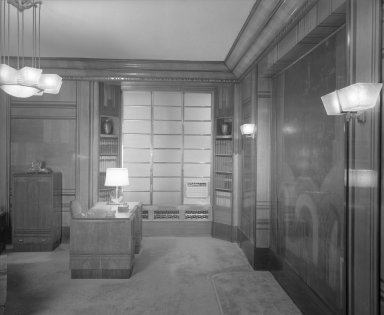
Alavoine of Paris and New York. Weil-Worgelt Study, ca. 1928–1930. Lacquer, glass, leather, veneered panels, 119 x 201 1/2 x 176 1/4 in. (302.3 x 511.8 x 447.7 cm). Brooklyn Museum, Gift of Raymond Worgelt, 70.23. Creative Commons-BY (Photo: Brooklyn Museum, 70.23_yr1970_in_situ06_bw_IMLS.jpg)
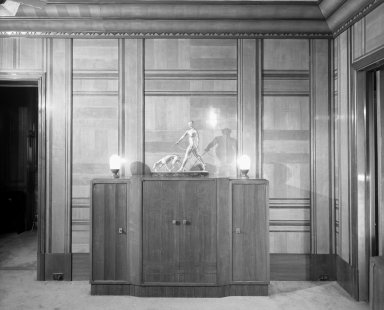
Alavoine of Paris and New York. Weil-Worgelt Study, ca. 1928–1930. Lacquer, glass, leather, veneered panels, 119 x 201 1/2 x 176 1/4 in. (302.3 x 511.8 x 447.7 cm). Brooklyn Museum, Gift of Raymond Worgelt, 70.23. Creative Commons-BY (Photo: Brooklyn Museum, 70.23_yr1970_in_situ07_bw_IMLS.jpg)
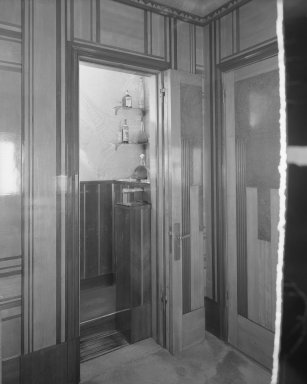
Alavoine of Paris and New York. Weil-Worgelt Study, ca. 1928–1930. Lacquer, glass, leather, veneered panels, 119 x 201 1/2 x 176 1/4 in. (302.3 x 511.8 x 447.7 cm). Brooklyn Museum, Gift of Raymond Worgelt, 70.23. Creative Commons-BY (Photo: Brooklyn Museum, 70.23_yr1970_in_situ08_bw_IMLS.jpg)

Alavoine of Paris and New York. Weil-Worgelt Study, ca. 1928–1930. Lacquer, glass, leather, veneered panels, 119 x 201 1/2 x 176 1/4 in. (302.3 x 511.8 x 447.7 cm). Brooklyn Museum, Gift of Raymond Worgelt, 70.23. Creative Commons-BY (Photo: Brooklyn Museum, 70.23_yr1971_installation1_bw_IMLS.jpg)
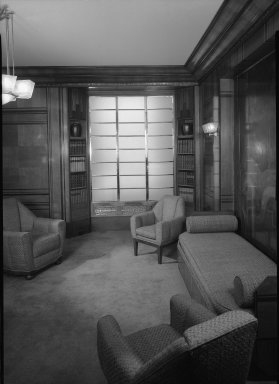
Alavoine of Paris and New York. Weil-Worgelt Study, ca. 1928–1930. Lacquer, glass, leather, veneered panels, 119 x 201 1/2 x 176 1/4 in. (302.3 x 511.8 x 447.7 cm). Brooklyn Museum, Gift of Raymond Worgelt, 70.23. Creative Commons-BY (Photo: Brooklyn Museum, 70.23_yr1971_installation2_bw_IMLS.jpg)

Alavoine of Paris and New York. Weil-Worgelt Study, ca. 1928–1930. Lacquer, glass, leather, veneered panels, 119 x 201 1/2 x 176 1/4 in. (302.3 x 511.8 x 447.7 cm). Brooklyn Museum, Gift of Raymond Worgelt, 70.23. Creative Commons-BY (Photo: Brooklyn Museum, 70.23_yr1971_installation3_bw_IMLS.jpg)

Alavoine of Paris and New York. Weil-Worgelt Study, ca. 1928–1930. Lacquer, glass, leather, veneered panels, 119 x 201 1/2 x 176 1/4 in. (302.3 x 511.8 x 447.7 cm). Brooklyn Museum, Gift of Raymond Worgelt, 70.23. Creative Commons-BY (Photo: Brooklyn Museum, 70.23_yr1971_installation4_bw_IMLS.jpg)
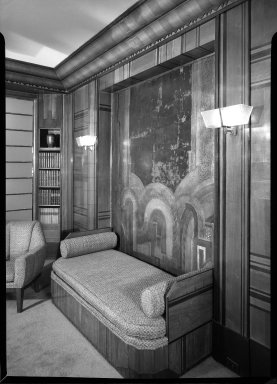
Alavoine of Paris and New York. Weil-Worgelt Study, ca. 1928–1930. Lacquer, glass, leather, veneered panels, 119 x 201 1/2 x 176 1/4 in. (302.3 x 511.8 x 447.7 cm). Brooklyn Museum, Gift of Raymond Worgelt, 70.23. Creative Commons-BY (Photo: Brooklyn Museum, 70.23_yr1971_installation5_bw_IMLS.jpg)
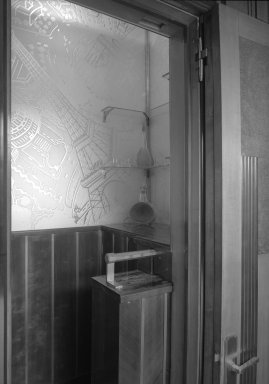
Alavoine of Paris and New York. Weil-Worgelt Study, ca. 1928–1930. Lacquer, glass, leather, veneered panels, 119 x 201 1/2 x 176 1/4 in. (302.3 x 511.8 x 447.7 cm). Brooklyn Museum, Gift of Raymond Worgelt, 70.23. Creative Commons-BY (Photo: Brooklyn Museum, 70.23_yr1971_installation6_bw_IMLS.jpg)
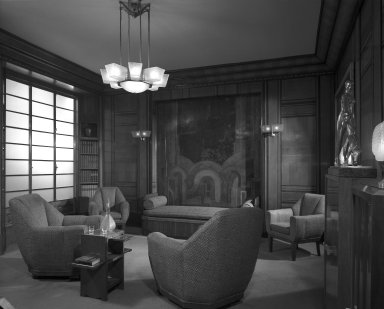
Alavoine of Paris and New York. Weil-Worgelt Study, ca. 1928–1930. Lacquer, glass, leather, veneered panels, 119 x 201 1/2 x 176 1/4 in. (302.3 x 511.8 x 447.7 cm). Brooklyn Museum, Gift of Raymond Worgelt, 70.23. Creative Commons-BY (Photo: Brooklyn Museum, 70.23_yr1971_installation8_bw_IMLS.jpg)

Alavoine of Paris and New York. Weil-Worgelt Study, ca. 1928–1930. Lacquer, glass, leather, veneered panels, 119 x 201 1/2 x 176 1/4 in. (302.3 x 511.8 x 447.7 cm). Brooklyn Museum, Gift of Raymond Worgelt, 70.23. Creative Commons-BY (Photo: Brooklyn Museum, 70.23_view1_bw.jpg)
Weil-Worgelt Study
Decorative Arts and Design
On View: Decorative Art, Worgelt Study, 4th Floor

